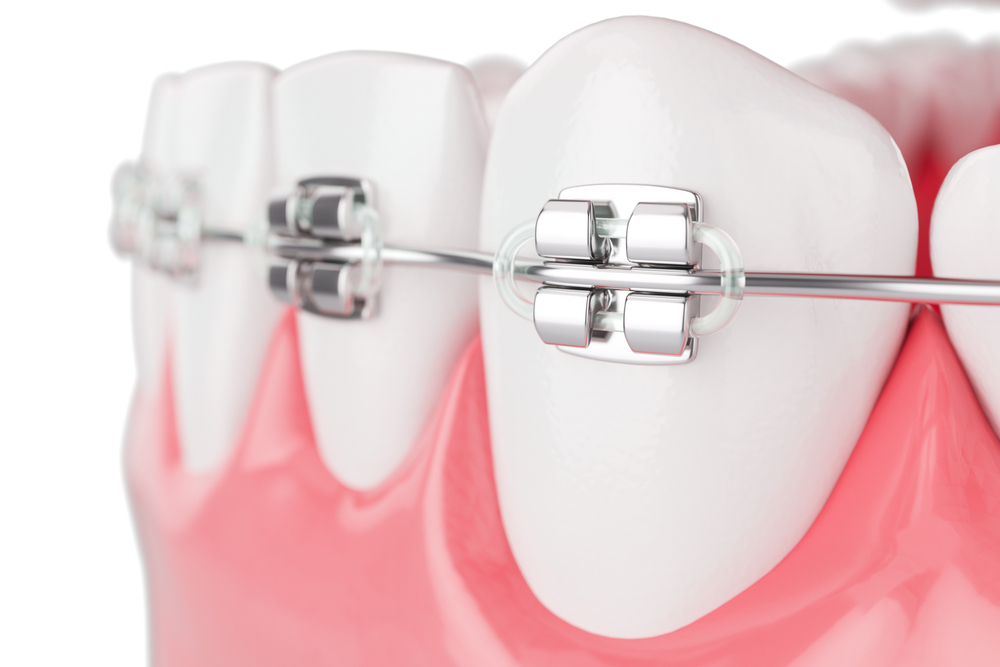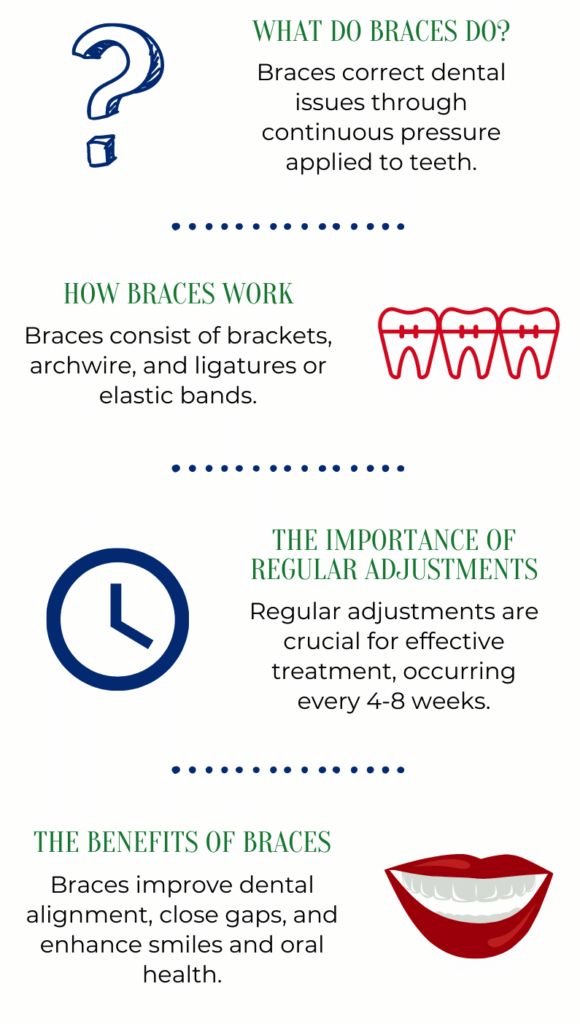Understanding the Mechanics of Braces and the Significance of Consistent Adjustments
Why braces?
Why do people opt for braces? Beyond the desire for a beautiful smile, braces offer a range of practical benefits. Crooked teeth, crowded smiles, and misaligned bites can lead to dental problems like cavities and discomfort.
Braces work to gradually align teeth and jaws, correcting these issues and enhancing oral health. The result is not only a straighter smile but also improved functionality, easier cleaning, and a boost in self-esteem. Whether it’s for aesthetic reasons or to address dental concerns, braces are a journey toward a healthier and more confident smile.

Extraordinary Experiences
Braces work by applying controlled forces to teeth over a period of time, gradually moving them into their desired positions.
The treatment process involves regular adjustments and check-ups with an orthodontist to monitor progress and make necessary modifications.
Braces have been a popular choice for orthodontic treatment for decades, and for good reason. At All About Braces, our team of experts understands the importance of achieving a healthy and confident smile. In this blog post, we’ll cover the basics of how braces work and why regular adjustments are crucial for successful treatment.
Types of Braces
- Traditional Metal Braces
- Ceramic Braces
- Lingual Braces
- Self-Ligating Braces
- Clear Aligners | Invisalign
- Damon Braces
- Palatal Expanders
- Orthodontic Headgear
- Clear Ceramic Aligners
- Retainers
How Braces Work
Braces operate by exerting steady pressure on the teeth throughout an extended duration, gently guiding them into their intended alignment. They comprise metal brackets affixed to each tooth, an archwire threading through these brackets and secured by small elastic bands called ligatures. In certain cases, elastic bands are also employed to enhance the force exerted on the archwire.
During this process, the bone undergoes modifications to accommodate the teeth’s new configuration. The duration of treatment varies, contingent upon the complexity of the dental concerns addressed and the specific type of braces employed. Generally, patients wear braces for a period ranging from one to three years.

The Importance of Regular Adjustments
Regular adjustments to the braces are crucial in order for the treatment to be effective. During these appointments, the orthodontist tightens the braces and replaces the archwire, which helps to maintain the continuous pressure on the teeth and keep them moving in the desired direction. The frequency of these adjustments will depend on the individual case and the type of braces, but they typically occur every 4-8 weeks.
Skipping or delaying an adjustment can prolong the overall treatment time and potentially lead to unsatisfactory results. That’s why it’s important to keep all scheduled appointments and promptly notify your orthodontist if you experience any issues with your braces between appointments.
The Benefits of Braces
Beyond enhancing the appearance of one’s smile, braces offer a multitude of advantages for oral health. Aligned teeth are more manageable to clean, mitigating the risk of cavities, gum problems, and related dental concerns. Furthermore, braces can enhance jaw alignment, potentially alleviating TMJ/TMD symptoms like jaw pain and headaches. Improved speech and chewing capabilities, along with heightened self-assurance, are additional benefits of having straighter teeth.
At Smile Tree Dental, our unwavering dedication is to delivering personalized care to each patient. We recognize that orthodontic requirements differ for everyone, and we invest the effort to formulate tailor-made treatment plans that yield optimal outcomes. With our expertise and individualized attention, you can confidently anticipate a journey toward a healthier, more contented smile.
